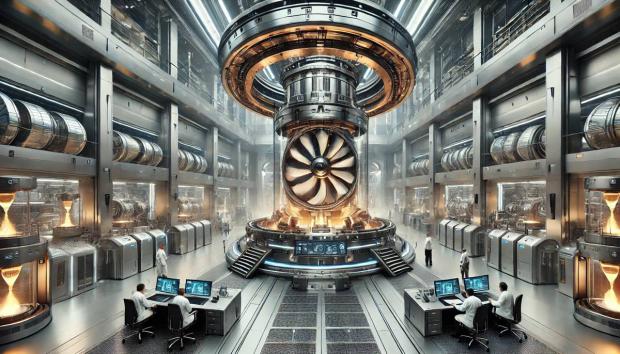
Breaking News
DRINK 1 CUP Before Bed for a Smaller Waist
 Nano-magnets may defeat bone cancer and help you heal
Nano-magnets may defeat bone cancer and help you heal
 Dan Bongino Officially Leaves FBI After One-Year Tenure, Says Time at the Bureau Was...
Dan Bongino Officially Leaves FBI After One-Year Tenure, Says Time at the Bureau Was...
 WATCH: Maduro Speaks as He's Perp Walked Through DEA Headquarters in New York
WATCH: Maduro Speaks as He's Perp Walked Through DEA Headquarters in New York
Top Tech News
 Laser weapons go mobile on US Army small vehicles
Laser weapons go mobile on US Army small vehicles
 EngineAI T800: Born to Disrupt! #EngineAI #robotics #newtechnology #newproduct
EngineAI T800: Born to Disrupt! #EngineAI #robotics #newtechnology #newproduct
 This Silicon Anode Breakthrough Could Mark A Turning Point For EV Batteries [Update]
This Silicon Anode Breakthrough Could Mark A Turning Point For EV Batteries [Update]
 Travel gadget promises to dry and iron your clothes – totally hands-free
Travel gadget promises to dry and iron your clothes – totally hands-free
 Perfect Aircrete, Kitchen Ingredients.
Perfect Aircrete, Kitchen Ingredients.
 Futuristic pixel-raising display lets you feel what's onscreen
Futuristic pixel-raising display lets you feel what's onscreen
 Cutting-Edge Facility Generates Pure Water and Hydrogen Fuel from Seawater for Mere Pennies
Cutting-Edge Facility Generates Pure Water and Hydrogen Fuel from Seawater for Mere Pennies
 This tiny dev board is packed with features for ambitious makers
This tiny dev board is packed with features for ambitious makers
 Scientists Discover Gel to Regrow Tooth Enamel
Scientists Discover Gel to Regrow Tooth Enamel
 Vitamin C and Dandelion Root Killing Cancer Cells -- as Former CDC Director Calls for COVID-19...
Vitamin C and Dandelion Root Killing Cancer Cells -- as Former CDC Director Calls for COVID-19...
World's most advanced hypergravity facility is now open for business

Located in the eastern Chinese city of Hangzhou, the Centrifugal Hypergravity and Interdisciplinary Experiment Facility (CHIEF) houses the world's largest hypergravity centrifuge. According to the South China Morning Post, the project was greenlit in 2018 by the national government, and construction began in 2020 at a cost of some 2 billion yuan (US$276.5 million).
Basically, it's a giant spinning arm in a large room that can carry a payload, and spins extremely fast to create artificial gravity stronger than what we normally experience on Earth.
When it spins at a high speed in a circle, the arm's motion creates what's called a centrifugal force; it pushes outward, simulating gravity that can be many times stronger than Earth's normal gravity (which we call 1G), aka hypergravity. This force helps us replicate conditions to test the strength of materials for building bridges and spacecraft, the effect of rivers' flood dynamics on dams, and how plants might grow in space.
By creating hypergravity conditions, CHIEF accelerates physical processes that would normally take much longer under Earth's gravity. This allows scientists to observe and study phenomena more quickly and efficiently.
Chen Yunmin, a professor at Zhejiang university who led the CHIEF project, said that with facilities like this, "scientists can observe the transport of pollutants that in nature would take tens of thousands of years."
Similarly, you could use a centrifuge like this to observe how dams might function over years of stress in just a few hours, and model dangerous scenarios safely. This helps engineers design better, safer dams and prepare for potential flood events.
Since they enable these realistic simulations much faster than they'd occur in nature, and with smaller models, these hypergravity centrifuges are said to 'compress' time and space. That also makes them useful for research into complex physics problems and engineering challenges.
CHIEF is designed to support a centrifuge capacity of 1,900 g-t (gravity acceleration × ton), and payloads of up to 32 tons. That's said to be more than other facility on the planet, beating out the US Army Corps of Engineers' facility that manages 1,200 g-t.



